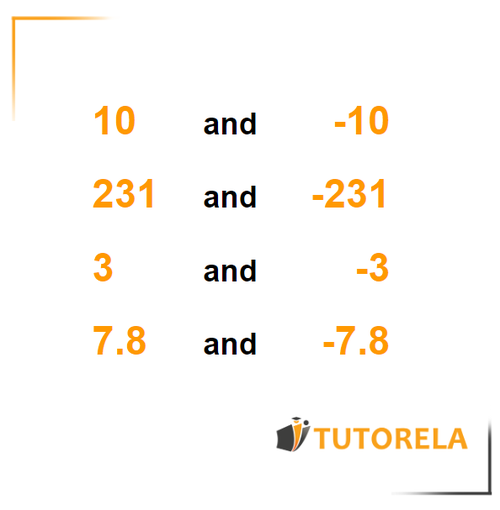In the previous articles we studied about the number line and integers. In this article we will explain what opposite numbers are, and how to identify them.
Opposite Numbers Practice Problems and Worksheets
Master opposite numbers with step-by-step practice problems. Learn to identify additive inverses, solve equations with opposite numbers, and understand symmetry on the number line.
- Identify opposite number pairs that sum to zero
- Find the additive inverse of positive and negative integers
- Solve addition problems using opposite numbers and fractions
- Apply absolute value concepts to determine opposite numbers
- Create number line representations showing symmetric numbers
- Complete fill-in-the-blank exercises with opposite number operations
Understanding Opposite numbers
What are opposite numbers, and how to identify them?
Opposite numbers are numbers that when added together result in the number .
The opposite of a number has the same absolute value, but with opposite sign.
Examples:
- and are opposite numbers.
- and are opposite numbers.
- and are opposite numbers (fractions).

Practice Opposite numbers
\( (+43)-(+15)= \)
Examples with solutions for Opposite numbers
What is the inverse number of
To solve the problem of finding the opposite number of , we will use the concept of opposite numbers:
- Step 1: Identify the given number, which is .
- Step 2: Determine the opposite number by changing the sign. The opposite of is calculated as follows:
The opposite of a negative number is its positive counterpart. So, the opposite of is .
Therefore, the answer is .
Answer:
What is the additive inverse number of
To solve this problem, we'll follow these steps:
- Step 1: Identify the given number
- Step 2: Apply the definition of an opposite number
- Step 3: Conclude with the opposite number
Now, let's work through each step with detailed explanations:
Step 1: We are given the number . This is a positive integer.
Step 2: The definition of an opposite number states that the opposite of any number is . Here, .
Step 3: Using the definition, the opposite number of is calculated as .
Therefore, the solution to the problem is .
Answer:
What is the inverse number of
To solve this problem, we'll follow these steps:
- Step 1: Identify the given number.
- Step 2: Find its opposite by changing the sign.
Now, let's work through each step:
Step 1: The problem gives us the number .
Step 2: The opposite of a positive number is the same number with a negative sign.
Thus, the opposite of is .
Therefore, the opposite number of is .
Answer:
Before you is a series of numbers
Arrange the numbers in ascending order from left to right
To arrange the numbers in ascending order, identify the numbers from the least to the greatest. Start by listing the numbers. Among them, is the smallest. Followed by , the next one is and the largest is . Therefore, in ascending order, the sequence is .
Answer:
What is the inverse number of
To determine the opposite number of , we will simply change its sign, following these steps:
- Step 1: Identify the given number, which is .
- Step 2: Change the sign of to find its opposite. Since is positive, its opposite will be negative.
By changing the sign of , we get . Therefore, the opposite number of is .
In conclusion, the solution to the problem is .
Answer: